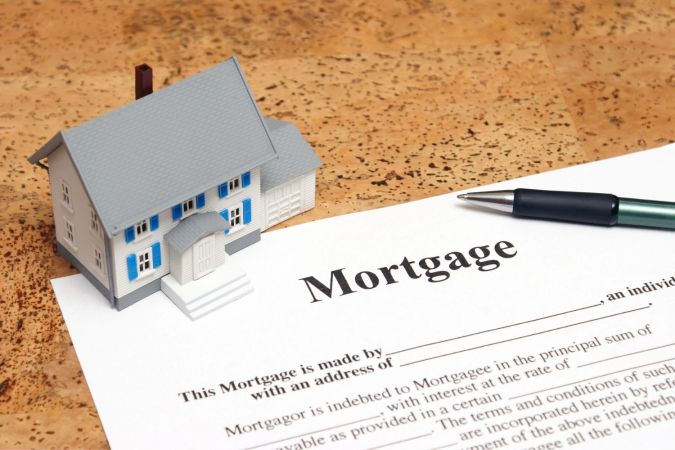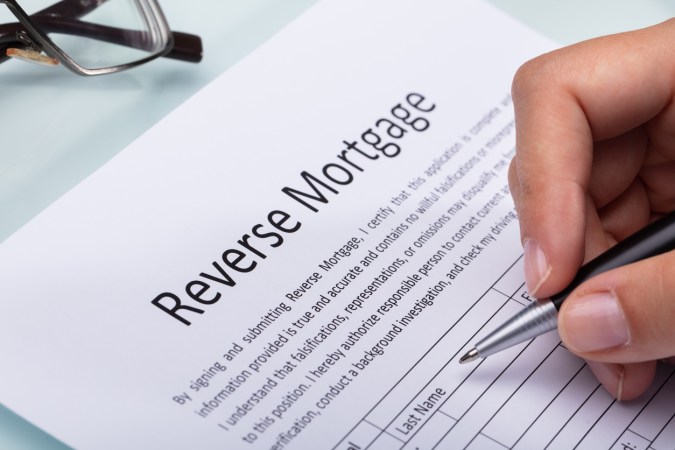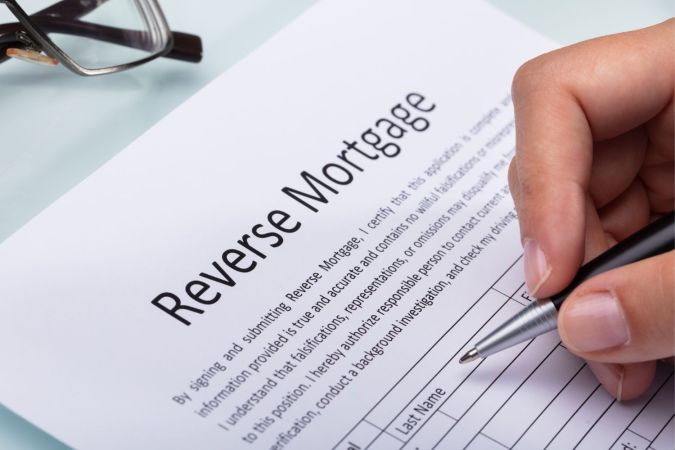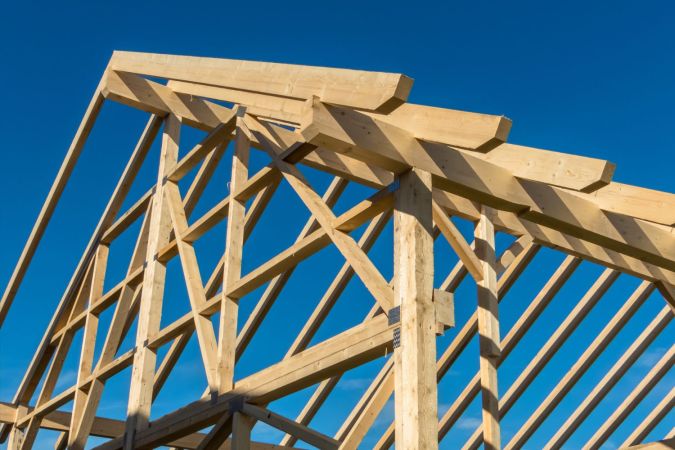We may earn revenue from the products available on this page and participate in affiliate programs. Learn More ›
Q: I am looking to buy a home for my growing family, and I’m finding that many homes that suit my needs are out of my price range with my current salary. However, I’m on a great path at work and expect to be making a much higher income in the next 5 years. Rather than buying a small house now and then moving to a larger one in a few years, would it make sense to get an interest-only mortgage on a home that would suit my family for years to come? And what is an interest-only loan, exactly?
A: An interest-only mortgage could certainly be an option, since you’ll have low interest-only payments for a set period of time before your payments will increase to include principal and interest. But it can be risky if you don’t have significant savings, and you may have trouble finding a lender who will approve an interest-only mortgage if you don’t have a large down payment. It’s certainly worth looking into, though, because interest-only mortgages do have benefits for the right borrower, including lower initial payments when your income is lower. Ultimately, the choice between a conventional mortgage and an interest-only mortgage may come down to what type of loan you’re able to qualify for.
An interest-only mortgage is a type of home loan that requires the borrower to pay only interest for a set period of time, known as an introductory period.
What is an interest-only mortgage? When a home buyer takes out a traditional mortgage, they are required to make monthly payments that consist of principal and interest. With an interest-only loan, however, there is no requirement for the buyer to pay money toward the principal for a set period of time, which is also called the introductory period. Borrowers who take out interest-only home loans will make monthly payments based on the loan’s interest rate, and once the introductory period is up they will be required to start repaying the principal in addition to the interest. An interest-only mortgage calculator can give homeowners an idea of their monthly payments so they can determine if it’s a viable option.
After the introductory period, the borrower’s monthly payments will increase to include both principal and interest.
An interest-only amortization schedule includes an introductory period that typically lasts for a few years. Once that period has ended, the borrower’s interest-only payments will change to include both principal and interest. That usually means that the monthly payment increases, since until that time the borrower has only been paying interest on the loan.
Interest-only home loans are generally structured as adjustable-rate mortgages. The borrower will pay a set interest rate for the introductory period, and once that is up the rate will change on a set schedule based on current market rates. For example, an interest-only mortgage that’s referred to by the lender as a “10/1 ARM” means that the introductory period lasts 10 years, after which the interest rate will adjust every year until the loan term ends (typically after 30 years). That could mean an ever-increasing interest rate for the borrower after the initial interest-only term, which may result in payments that are too expensive for the homeowner to keep up with.

Alternatively, borrowers can choose to pay a lump sum, refinance, or sell the home after the introductory period.
If the borrower doesn’t want to make monthly principal payments on the loan, they have a few alternative choices. If the borrower has substantial savings and plans to stay in the home, they may choose to pay a lump sum of cash toward the principal. This might mean paying down the balance significantly, or even paying it off entirely.
Homeowners without that kind of cash can choose to either refinance their home or sell it to pay off the mortgage balance. If the homeowner wants to stay in the home and can qualify for a refinance, this may be the better option. Paying the cost to refinance may allow the homeowner to secure a better rate than on their interest-only mortgage, which could translate to lower monthly payments. But if the homeowner doesn’t want to remain in the home, selling it and using the profits to pay off the interest-only mortgage is the better option. Homeowners may want to do some in-depth research on when to refinance a mortgage to make sure they fully understand the process before moving forward.
Interest-only mortgages do not qualify for government-backed home loan programs.
Homeowners who are interested in applying for a government-backed mortgage, such as those offered by the Federal Housing Administration (FHA), Department of Veterans Affairs (VA), and United States Department of Agriculture (USDA), will not have the option to apply for an interest-only mortgage because these government-backed programs do not guarantee them. This is because qualification standards are more stringent for an interest-only mortgage, and these government-backed programs are designed to help prospective homeowners who may be unable to qualify for a conventional mortgage.
An interest-only loan may appeal to first-time home buyers who expect their income to be higher at the end of the introductory period.
Often, first-time home buyers are early on in their careers or just starting a family, and therefore working with a limited budget. They may struggle to find a home they can afford and find that they can afford a larger home after a few years. For these buyers, an interest-only loan could help them afford a more expensive house with the expectation that their income will have increased by the end of the introductory period. However, it may be hard for this type of buyer to find a lender who will approve an interest-only loan unless they have a large down payment or significant savings.
Because no one can predict the future, this may be a risky move since the homeowners may find that their income doesn’t increase as much as they expected it to once the introductory period is over. In that case, they may find themselves unable to afford the monthly payments once they are required to start paying toward the principal, which means they might have to sell their home to pay off the loan. However, if their income is at the level they expected it to be, they’ll find themselves in a home better suited to their budget and lifestyle than they would have if they had bought a lower-priced home that they would ultimately outgrow.

When making interest-only payments, borrowers aren’t gaining any equity in their home.
One of the drawbacks of an interest-only mortgage is that homeowners aren’t gaining any equity in their home during the introductory period since they aren’t making any payments toward the loan principal. With a conventional mortgage, the homeowner pays both principal and interest, and they can start building up their home equity as soon as their repayments begin. After a few years of making payments, the homeowner may have a fairly substantial amount of equity, depending on how much money they used as a down payment. But after the same time period of making payments on an interest-only mortgage, the homeowner won’t have gained any equity in their home.
Interest-only mortgages tend to be harder to qualify for than conventional or government-backed mortgages.
The best mortgage lenders often have more stringent qualification requirements for interest-only mortgages than they do for conventional home loans. Typically, this includes a large down payment, a higher-than-average credit score, a low debt-to-income ratio, and significant cash savings. Borrowers who cannot meet these requirements will likely not qualify for an interest-only mortgage and will need to consider a different type of loan to finance their home purchase. Borrowers can utilize an interest-only mortgage payment calculator to see whether they would qualify for this type of loan and to help them choose a mortgage lender that’s right for them.
Interest rates may be higher on an interest-only mortgage than on a conventional mortgage.
Although monthly payments will be lower during the introductory period, an interest-only mortgage rate is typically higher than for a conventional or government-backed mortgage. That means the borrower will end up paying more interest over the loan term than they would with another type of mortgage with a lower interest rate. Borrowers will want to keep this in mind when deciding whether to apply for an interest-only mortgage or another type of home loan.
Borrowers may be able to make a profit if they choose an interest-only mortgage and the home’s value increases.
One scenario in which an interest-only loan could be a good option is when real estate prices are on the rise. If the buyer sells the property before the introductory period ends, they could make a profit if the home’s value has risen significantly since they purchased it. This can be a risky move, though, since the housing market can be volatile. Borrowers who take out a 10/1 ARM and sell in their ninth year of ownership may find that the value of the home has decreased, which means selling it would result in them losing money rather than making a profit. Homeowners considering this option may want to consult a financial adviser to determine whether an interest-only mortgage would make sense for them.
Interest-only mortgages generally offer additional tax benefits over conventional loans.
Mortgage interest is a tax-deductible expense in the U.S. That means homeowners can deduct the interest they pay on their home loan up to the limit imposed by the federal government. Depending on when the homeowner initially took out the mortgage, the limit could be anywhere from $750,000 to $1 million. Since interest-only mortgages tend to have higher interest rates than conventional mortgages, homeowners will likely be able to deduct a higher amount from their annual tax return if they financed their home with an interest-only mortgage.









